Photo
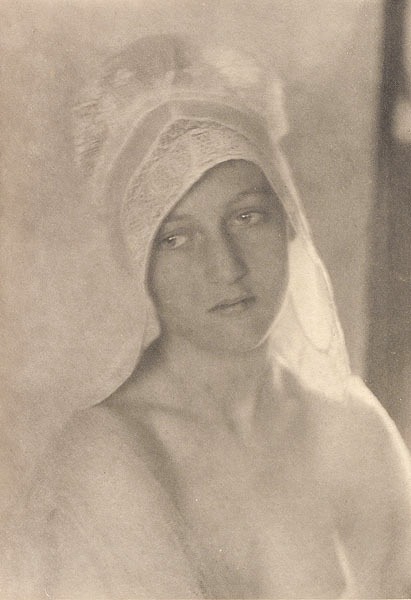
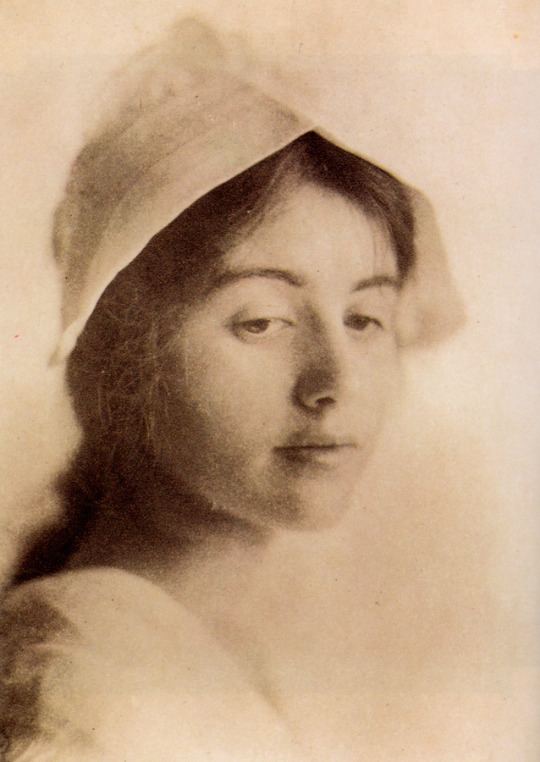
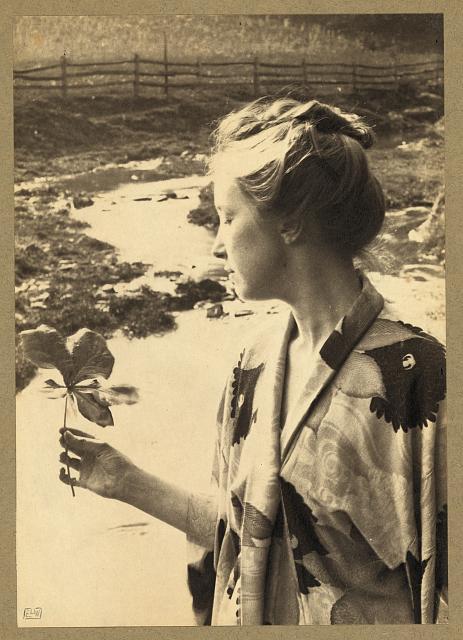
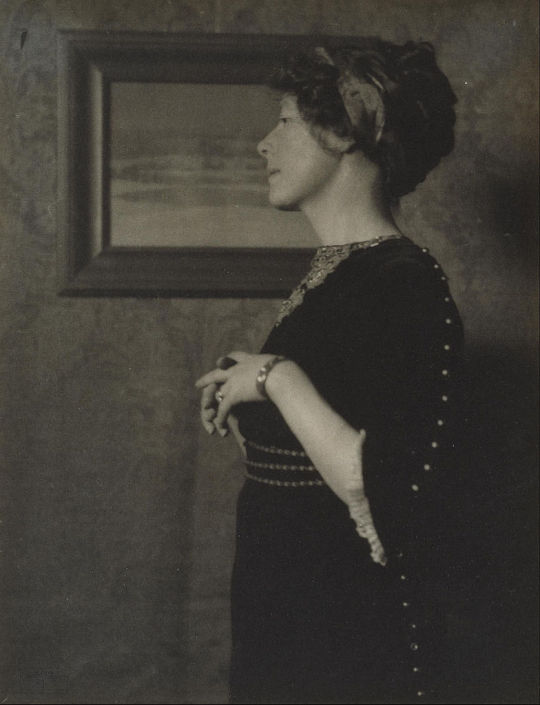
The Face of Beauty Through Eva Watson-Schütze’s Lenses
The whole visible universe is but a storehouse of images and signs to which the imagination will give a relative place and value; it is a sort of pasture which the imagination must digest and transform. – Marcel Proust
We will never come to know what inspired Eva Watson-Schütze to take up a camera in hand and explore this ‘storehouse of images’ through its lenses. An inspiration is often the result of an inner brooding which reveals itself in various forms, but keeps the source carefully hidden at the depth of our subconscious minds. It is not so important to go enquiring for that either. A wild flower by the road may compel a poet to write an ode to such a beauty, but those who carry no ‘poetry’ in their hearts will remain oblivious to its charm.
In 1883, Eva Watson-Schütze took up her paintbrush and devoted the next six years of her life to learning painting under the auspices of such well known figures as Thomas Eakins. By early ’90s, her appreciation for and subsequent knowhow of the pictorial movement started growing rapidly. In the later part of the same decade she not only set up a studio for herself, but became an established pictorial photographer in Philadelphia. The inaugural Philadelphia Photographic Salon exhibited her work which also gave her an opportunity to be acquainted with Alfred Stieglitz.
With growing fame and success came the opportunities of showcasing her work far and wide. It led her to believe that, “There will be a new era, and women will fly into photography.” But Eva Watson-Schütze herself was never satisfied with being branded a “woman photographer.” She even objected to being a part of a pioneering exhibition of American women photographers, scheduled in Paris, on this ground. She wanted her aesthetic visions to be recognised “irrespective of sex.”
Eva Watson-Schütze’s forceful fine art photography earned her a membership of The Linked Ring. Six years before her death she also became a director of The Renaissance Society. Despite the obvious difficulties of working in a still conservative society, Eva Watson-Schütze’s (1867 – 1935) greatest achievement is not limited to, and should not be defined as, going against the tide of time as a woman. Her finest accomplishment must be in observing the face of beauty piercing through the grime and dust of modern civilisation. For, in this maze of life, it is easier to forget how simple, pure and beautiful the sunshine on our back or the colour of autumn leaves could be.
With a few flowers in my garden, half a dozen pictures and some books, I live without envy. – Lope de Vega
#eva watson schutze#photography#fine art photography#art photography#pictorial#pictorialism#alfred stieglitz#black and white photography#linked ring#thomas eakins#beauty#lope de vega#marcel proust
16 notes
·
View notes
Photo
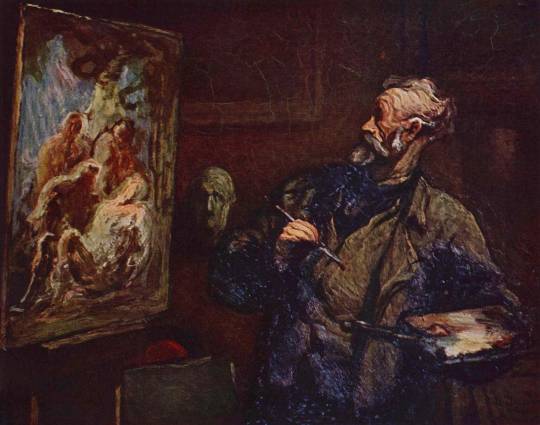
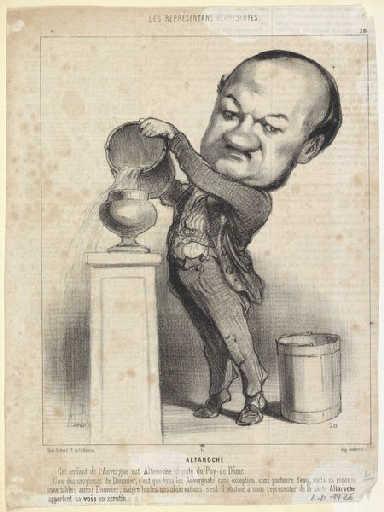
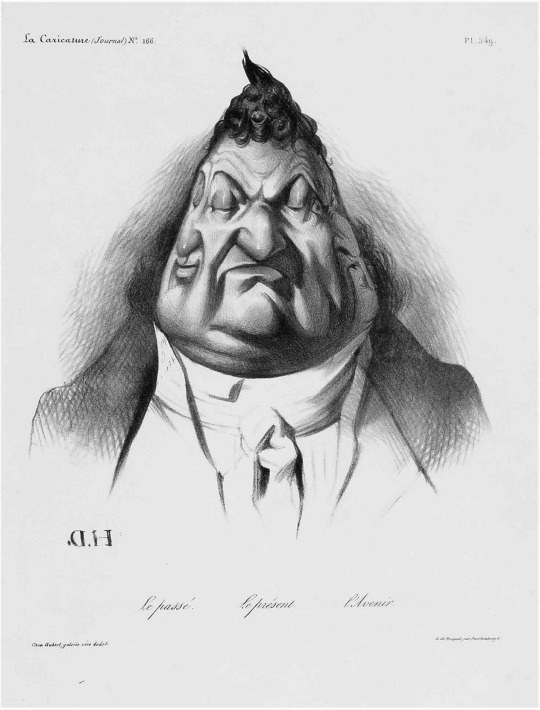
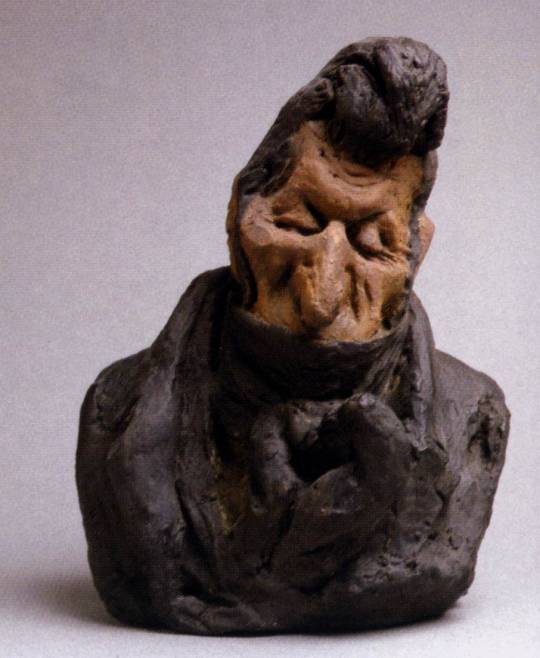

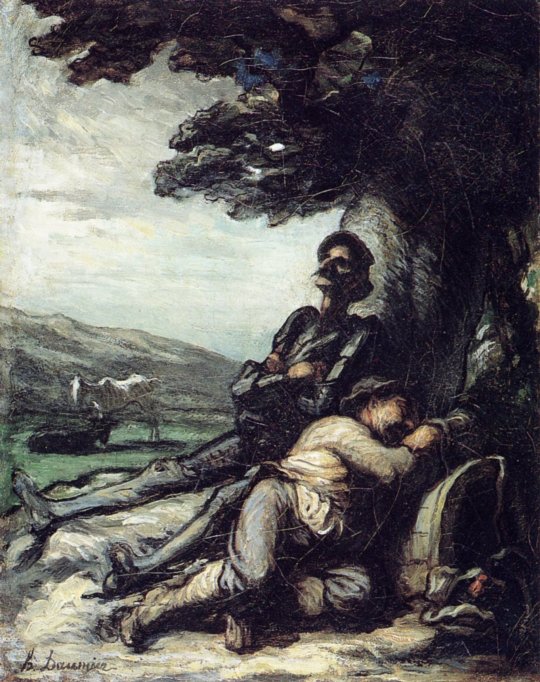
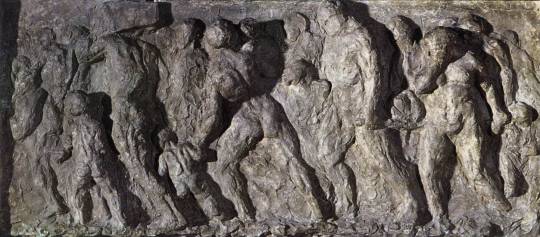
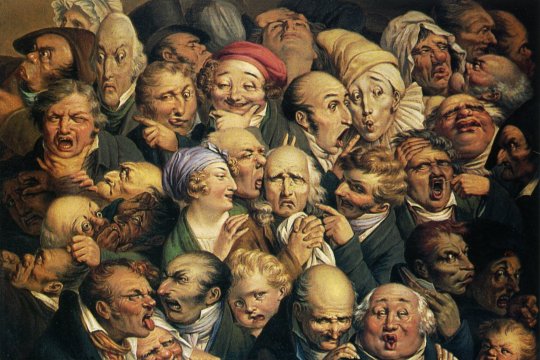

Using painting as a powerful tool to poke fun at the prevailing social, economic and political condition may not be such a rare thing. But the way this instrument was used by Honoré Daumier (February 26, 1808 – February 10, 1879), a prolific painter, sculptor, lithographer and engraver, boasts of a singularity not seen before or since his lifetime. He used all forms of art, including sculpture, to express his dissatisfaction over the health of the ‘republic’. Daumier believed in equal opportunities for all and did not shy away from showing his disapproval of the maltreatment of the citizens of his country through his works.
The man often dubbed as the ‘Michelangelo of caricature’, whom Baudelaire considered, ‘One of the most important men, I will not say only of caricature, but also of modern art’ died virtually unknown. During the time of his death Daumier, who already lost his sight, was living off the mercy of his friends such as Camille Corot. Perhaps, it is the ignominy of the same society that one of 19th century’s most remarkable artists died a broken man. Courtesy his association with Eugène Delacroix, Charles Baudelaire, Edgar Degas, Corot and art connoisseur Paul Durand-Ruel a considerable amount of his massive collection was saved for future generation to review and admire.
A lifelong devotee of art, Daumier was very fond of Don Quixote since early days. A quixotic treatment of subjects is revealed in almost all his works. But unlike many caricaturists of his time and of later date, he never compromised with artistic sanctity, something which renders greater value to his work. Everybody has a favourite Daumier piece of art which may include the famous Ratapoil, Mother, The Fool or something else. Even the lesser known ones, like the Big, Bold and … Constitutional, do not fail to amaze the viewers. Somewhat expectedly, political establishments never took his work kindly. Many of his lithographs were confiscated.
Despite constant opposition of the powers that be and apparent disregard of the very people for whom he took up his brush, the powerful message of art could not be erased. This reminds us one of Daumier’s own work titled, ‘Intermission’. In the scene, the artist’s chair is vacant, his hat left behind as a cue that he is to come back in a short while, perhaps when the intermission is going to be over.
#honore daumier#art#painting#oil painting#lithography#wood carving#satire#political satire#sculpture#camille corot#edgar degas#eugene delacroix#charles baudelaire#paul durand ruel#don quixote#caricature
13 notes
·
View notes
Photo






Even a century after its creation, Gyoshu Hayami’s Shinryoku or ‘New Leaves’ continues to be the harbinger of a new season. The joy in the atmosphere, after long and dreary winter, is all too palpable in the air. Shinryoku literally means fresh verdure of spring (‘New Leaves’ lacks both the imagination and lyricism of the Japanese name). Both the context and content of this painting becomes even more significant when we come to know that Gyoshu Hayami painted this ethereal scene of vernal season only a year after his near fatal accident. He lost one of his limbs in the process, but his capacity of painting the heavenly delights on earth remained intact. Perhaps, fresh leaves of 1915’s spring were taken straight out his book of life.
In his short lived career Gyoshu Hayami (August 2, 1894 – March 20, 1935) ensured that he leaves the art of his country firmly prepared for the new era. In the process he came in touch with other premier artists, such as Matsumoto Fuko and Yokoyama Taikan, of his time. He travelled to Italy with Yokoyama. The final years of his life were dedicated in taking Japanese art beyond its boundaries.
Though Hayami’s art was firmly rooted in tradition, known as Nihonga in Japan, he never failed in absorbing and assimilating the ideals of other styles prevalent during his time. His realism often thrived in the economy of matter and tone. But the chill from Shugakuin’s snowy fields or the heat of Enbu reach us equally powerfully, nonetheless. His untimely death failed to erase his legacy. Today his work is considered an Important Cultural Property. But more importantly, his art continues to define the strength and limit of human imagination and sensitivity.
22 notes
·
View notes
Photo






Dührkoops’ Immortal Creations
In 1870, Rudolf Dührkoop (August, 1848 – April, 1918) left behind a stable career in railroad to learn the finer nuances of photography. In next few years the power of this visual medium overwhelmed him so much that he devoted his heart and soul to it. After considerable struggle, Dührkoop managed to open his studio in Hamburg. He regularly started contributing articles about photography in magazines and periodicals. 1888 saw him become a part of German Photographers’ Association. Dührkoop’s teenage daughter Minya Diez–Dührkoop (June, 1873 – November 1929) became both a pupil and assistant in her father’s studio. Dührkoop’s unique style of picturing people’s faces and his subsequent accomplishments in art photography soon started gaining attention across Europe. Though critics were slow to acknowledge the value of natural poses and relaxed mood exhibited by his models in his many portraits, support from such connoisseurs and art critics as Alfred Lichtwark was enough to provide Dührkoop and his daughter further inspiration to continue their pivotal work. Minya Diez herself acted as a model in many of his father’s unconventional portraits. After her father’s demise she continued to work as a professional photographer and preserver of her father’s legacy. Dührkoops’ pictorialism created waves in the world of photography and firmly imprinted their names in the annals of time.
#photography#art photography#black and white photography#pictorialism#fine art photography#rudolf duhrkoop#minya diez duhrkoop#germany#hamburg
3 notes
·
View notes
Quote
And, strange to tell, among that earthen lot
Some could articulate, while others not:
And suddenly one more impatient cried–
‘Who is the Potter, pray, and who the Pot?’
Omar Khayyam (via itsquoted)
44 notes
·
View notes
Photo

May 2015 help you realise your most cherished dreams! Merry Christmas!
2 notes
·
View notes
Quote
How great a joy I feel in my heart. That a day so pleasant, so dear and glorious begins, a day that I greet with the wish. That long years may pass in happiness. In health and vigour, peacefully, successfully. May the gift of heaven fall richly upon you.
Frédéric Chopin (via itsquoted)
81 notes
·
View notes
Photo








Eadweard Muybridge’s life could be a case in point for an argument that suggests fictional stories, however inspired by life, can hardly match the dramas of reality. The photographer who pioneered chronophotography and the study of locomotion alongside Étienne–Jules Marey inspired generations of artists, photographers, filmmakers and creatives of every other field through his art and life. The likes of Francis Bacon, Thomas Eakins and Marcel Duchamp depended on the genius of Eadweard Muybridge to produce their works of art.
Eadweard Muybridge was born on April 9, 1830 in Kingston upon Thames. Son of a prospective businessman, Muybridge thrived in his own business of selling books since an early age. At an age of 25, Muybridge relocated to California at the height of gold rush where his life started unfolding in unexpected often bizarre fashion. Five years after his emigration, Muybridge planned to pay a short visit to England for procuring more books. With his brother looking after his business, he set out in a stagecoach on a fateful day. While approaching Saint Louis, the stagecoach got involved in a terrible accident, killing one of the passengers and severely injuring others, including Muybridge.
Muybridge spent months in recuperation with impaired vision, memory and other psychological effects as a result of his traumatic brain injury. As a course of treatment, his doctor suggested him to take up an art form such as photography. Accordingly, in years between 1861 and 1866 he devoted himself in studying photography. A year later he returned to his adopted home, San Francisco as a professional photographer. His prominence rose with his famous landscape photographs of Yosemite Valley.
Just as the photographer Muybridge’s career started blossoming, once again he found himself involved in a tragedy. This time a skirmish with his wife’s lover saw the latter killed by Muybridge, shot point blank. Muybridge was arrested and a lengthy and often irksome courtroom drama ensued. His friends and lawyers contested, that the accident more than decade ago left Muybridge emotionally unstable. This extricated him from the confinement.
1872 was also a landmark year in artist Muybridge’s life. On invitation of Leland Stanford, Muybridge took several photographs of horses in locomotion in Sandford’s ranch. He used a crude form of movie projector, zoopraxiscope, to show how all four feet of a galloping horse remain in air even if for a fraction of a second. He used the multiple exposure techniques to picture other moving animals and even waltzing couples. However, these were only tips of Muybridge’s extensive portfolio which contain treasures yet to be unearthed. The last decade of his life was spent in England, lecturing and writing on photographic techniques. He passed away on May 8, 1904 in the same place he was born, Kingston upon Thames.
#eadweard muybridge#photography#locomotion#etienne jules marey#chronophotography#movie#yosemite#california#england#drama#horse#landscape#panama
6 notes
·
View notes
Quote
There is no understanding of the past without personal experience, without reliving it in imagination. A word is nothing unless it has values and an atmosphere, unless you grasp its historical significance.
Stefan Zweig (via itsquoted)
76 notes
·
View notes
Photo








Paulus Potter’s time on earth was rather shortlived. But the time between 1625 and 1654 was enough for him to reach his artistic maturity. He excelled in painting animals in their natural surroundings. Potter was born in a family of artists. His selection of portraying livestock on canvas may seem unusual today, but was not so in 17th century Netherlands. The lifesize painting of The Young Bull remains one of his most famous artworks.
18 notes
·
View notes
Quote
A good painter is to paint two main things, men and the working of man’s mind.
Leonardo da Vinci (via itsquoted)
41 notes
·
View notes
Photo









While invention and further development of any art form is bound to be a collective effort some people can lay greater claim on its evolution than the others. Louis Daguerre was one such pioneer in the field of photography. Daguerre (November 18, 1787 – July 10, 1851) was already an accomplished artist, theatre set designer and scene painter when photography happened to capture his imagination. His skills in producing illusionistic theatre sets later produced diorama, another one of his many inventions.
The artist’s association with Nicéphore Niépce was instrumental in the invention and subsequent deployment of Daguerretype photography. It was somewhat similar to later day polaroids and was used to produce some of the most evocative images of 19th century France. Though his initial explorations were limited to portrait photography soon he found other sources of inspirations in busy street corners and over the green pastures beyond the limits of the city. He failed to rip full benefits of any of his inventions – photography or diorama. The latter made its introduction in 1822. But later day artists and photographers took full advantage of his inventions and produced some memorable pictures that continue to enthrall everyone.
#louis daguerre#art#painting#photography#birthday#portrait#street photography#architecture#diorama#daguerrotype#black and white#birth anniversary#france#nicephone niepce#paris
4 notes
·
View notes
Quote
There is nothing you can see that is not a flower;
There is nothing you can think that is not the moon.
Matsuo Basho (via itsquoted)
60 notes
·
View notes
Quote
Art is a little bit larger than life – it’s an exhalation of life and I think you probably need a little touch of madness.
Laurence Olivier (via itsquoted)
110 notes
·
View notes
Photo








In a letter to friend and fellow artist Frédéric Bazille in 1864 a delighted Claude Monet mentioned, ‘…every day I discover even more beautiful things. It is intoxicating me, and I want to paint it all – my head is bursting.’ Similar sentiments were expressed recurrently whenever the artist came in touch with nature, raw and untamed. And with such passionate love of all things harmonious and beautiful, it was only natural that Monet would become a crucial figure in the impressionist movement.
Claude Monet’s (November 14, 1840 – December 5, 1926) appreciation for en plein air paintings developed under Eugène Boudin. Later in the auteur of Charles Gleyre he became acquainted with Pierre–Auguste Renoir, Alfred Sisley and Bazille. While erstwhile stalwarts like Joseph Mallord William Turner may have influenced him, it was Édouard Manet’s style that he greatly appreciated and minutely studied. The importance of the impressionist art movement is well documented. Early struggles notwithstanding, his stature as an artist grew with the passage of time. He took great care in finding and then cultivating each of his sources of inspiration. Much to the dismay of some people of the time, such details as the palour of Camille Monet’s skintone on her deathbed did not escape his notice. He later revealed, ‘Colour is my day–long obsession, joy and torment. To such an extent indeed that one day, finding myself at the deathbed of a woman who had been and still was very dear to me, I caught myself in the act of focusing on her temples and automatically analysing the succession of appropriately graded colours which death was imposing on her motionless face.’
Monet’s garden is as famous as his art, in fact, its renown increased everytime the artist painted one of its many shady nooks, water body and flowers to the point of abstraction. Over the years he dressed up his garden in great care. In times of personal crisis painting in his garden provided him solace. With advancing age as his eyesight started failing his paintings of the garden developed newer tones and became further abstracted on his canvas. In a mixture of admonishment, sigh and joy he uttered,
Nothing in the whole world is of interest to me but my painting and my flowers.
#claude monet#art#painting#birthday#colour#impressionism#frederic bazille#paris#eugene boudin#pierre auguste renoir#alfred sisley#garden#landscape#marine#birth anniversary#still life
78 notes
·
View notes
Quote
Time it is
To unfold thy perfect beauty. I would be
Thy lover, and Thine only–I, mine eyes
Seal’d in the light of Thee to all but Thee,
Yea, in the revelation of Thyself
Self–lost, and conscience–quit of good and evil.
Thou movest under all the forms of truth,
Under the forms of all created things;
Look whence I will, still nothing I discern
But Thee in all the universe…
Jámi Noureddin Abdurrahman (via itsquoted)
15 notes
·
View notes
Photo








The artist is the confidant of nature; flowers carry on dialogues with him through the graceful bending of their stems and the harmoniously tinted nuances of their blossoms. Every flower has a cordial word which nature directs toward him.
Auguste Rodin was born on November 12, 1840 in a humble Parisian suburb. Seeing his interest in drawing and painting, Jean–Baptiste Rodin admitted fourteen year old Auguste to Petite École. The four years spent in that institution proved to be crucial for the artist’s later day success. For it inculcated in him the values of hard work and perseverance. He learnt how to draw meticulously from his memory. Despite his visibly stupendous talent and devotion, Auguste Rodin was forced to spend next two decades of his life doing menial work. He slogged six precious years away in Belgium and saved enough to make an artistic pilgrimage to Italy.
Yet penury was not the only distress that Rodin had to put up with during this period. Early 1860s saw him deeply affected by the untimely death of his elder sister, so much so, that he sought solace in joining Congregation of the Blessed Sacrament. His later day proposition, ‘nothing, really, is more moving than the maddened beast, dying from unfulfilled desire and asking in vain for grace to quell its passion,’ could well have been rooted in his experience from these years. One of Rodin’s earliest known sculptures was of his father’s, completed in 1860. This was followed up with a bust of Mignon depicting his muse Rose Beuret (1864). A year later his attempt of entering the Salon through The Man with the Broken Nose was thwarted owing to its ‘ghastliness’ and unfamiliarity. Rejection was a recurrent theme and perhaps to refresh his artistic soul he indulged in landscape painting briefly between 1871 and 1877.
The turn of a new decade marked a revival of his fortune. His closeness to the artistic and intellectual circles of the time served him well. After years of struggle, official recognitions too started to follow. The years of artistic fecundity were also marked by an acquaintance with other prominent personalities of the day like Rainer Maria Rilke, Claude Monet, Paul Cézanne and Oscar Wilde. An association with Camille Claudel ensued. As the war broke out Rodin sought refuge in England. He continued working on sculptural pieces and sketches almost till his last breath on November 17, 1917.
The artist must create a spark before he can make a fire, and before art is born, the artist must be ready to be consumed by the fire of his own creation.
#auguste rodin#art#sculpture#painting#birthday#france#monument#camille claudel#victor hugo#birth anniversary#travel#bronze#marble#rainer maria rilke#oscar wilde#claude monet#paul cezanne
44 notes
·
View notes